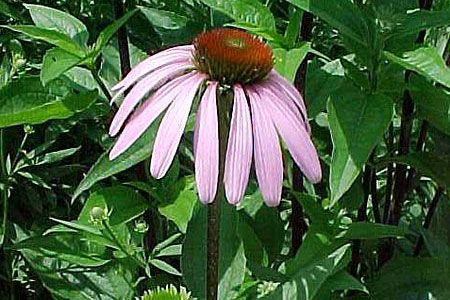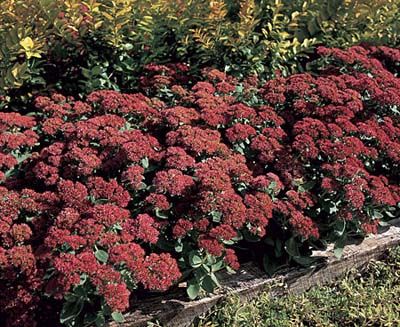
In regions where water scarcity is a growing problem, drought-resistant perennials offer a sustainable solution for maintaining a beautiful garden. These hardy plants thrive with minimal water, making them ideal for eco-conscious homeowners and those living in dry climates. This guide explores the benefits of low-water gardening and introduces several drought-resistant perennials you can plant around your home.
About Drought-Resistant Perennials
Drought-resistant perennials are plants that can withstand extended periods of dry conditions without significant damage or dying out completely. These plants have evolved to thrive in arid environments, making them excellent choices for low-water gardens.
They often boast features like succulent leaves, silver or gray foliage, and compact growth habits that help them conserve water. This adaptability helps them survive in tough conditions and reduces how often you have to water them—making your garden more sustainable and manageable.
Benefits of Low-Water Gardening
Low-water gardening, also known as xeriscaping, offers numerous advantages for both homeowners and the environment. By choosing drought-resistant perennials, you can:
- Reduce water consumption and lower utility bills
- Minimize maintenance time and effort
- Create a more sustainable and eco-friendly landscape
- Attract pollinators and other beneficial insects
- Enjoy a beautiful garden even during water restrictions
As landscape designer Nicole Lopez notes, “Where drinking water is scarce, it doesn’t make sense to use so much of it on our lawns and flowers. You need to match plants to the climate that you live in. It just doesn’t work the other way around. “
Additionally, low-water gardening practices conserve local water resources, which is increasingly important in the face of climate change and growing population pressures.
Top Drought-Resistant Perennials for Your Garden
When choosing drought-resistant perennials for your garden, consider plants that have various colors, textures, and growth habits. Here are some top choices to get you started.
Colorful Bloomers
These drought-resistant perennials add vibrant hues to your garden while requiring minimal water.
Yarrow ‘Coronation Gold’ (Achillea Spp.)
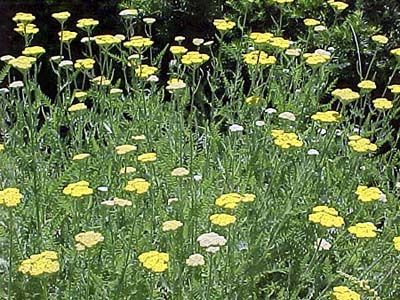
Yarrow ‘Coronation Gold’ features golden yellow flowers atop silvery-gray foliage. This hardy perennial grows up to 3 feet tall and blooms from mid-summer to early autumn. It thrives in full sun and well-drained soil, making it an excellent choice for dry gardens in USDA Hardiness Zones 3 to 8. It has a striking appearance and attracts pollinators.
Purple Coneflower (Echinacea Purpurea)
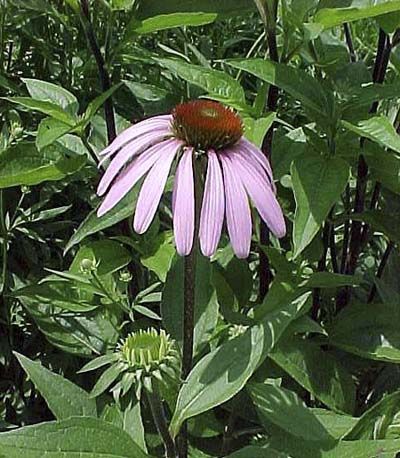
Purple coneflower is a native North American perennial known for its abundant, purple-pink daisy-like blooms. Growing 2–4 feet tall, this drought-resistant plant prefers full sun and well-drained soil. It’s hardy in USDA Hardiness Zones 3 to 10, making it suitable for a wide range of climates. Beyond its beauty, purple coneflower also attracts butterflies, improving both the ecological and ornamental value of your garden.
Silver Artemisias (Artemisia Ludoviciana ‘Silver King,’ ‘Silver Queen,’ ‘Valerie Finnis’)
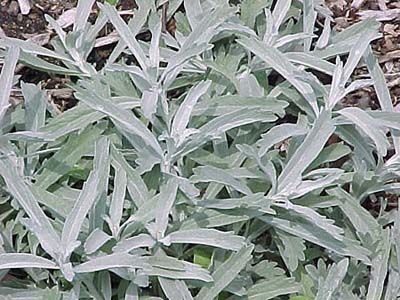
With silvery-gray aromatic leaves, this plant grows 18 to 48 inches tall, depending on variety. It prefers full sun and well-drained soil. It can be invasive in some climates, so divide often or contain. It’s hardy to -40 degrees Fahrenheit and thrives in USDA Hardiness Zones 4 to 9.
Tall Bearded Iris (Iris Germanica Hybrids)
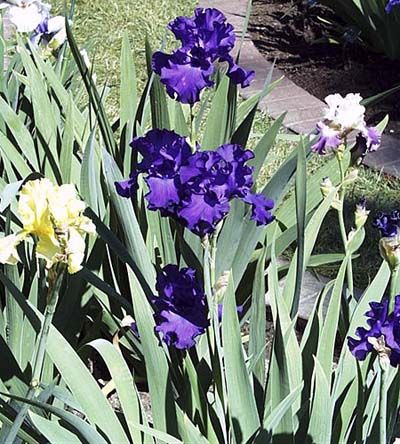
Tall bearded iris offers ornamental sword-like foliage and distinctive six-petal flowers with fuzzy “beards.” These drought-resistant perennials bloom in spring and can reach heights of 27 inches or more. They prefer sun and well-drained soil, thriving in USDA Hardiness Zones 4 to 10. The tall bearded iris comes in many colors, so you can choose a design that fits your garden.
Aromatic Herbs
Drought-resistant herbs not only add fragrance to your garden but also serve culinary purposes.
Rosemary (Rosmarinus Officinalis)
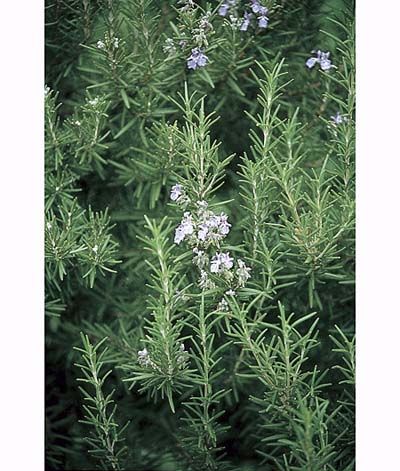
Rosemary is a highly aromatic herb with pine-needle-like leaves. This drought-resistant perennial can grow up to 5 feet tall and prefers full sun and well-drained soil. It’s hardy in Zones 6 to 9, making it suitable for milder climates. In addition to its culinary uses, rosemary’s robust fragrance can deter pests, making it both a practical and pleasant addition to your garden.
Common Thyme (Thymus Vulgaris)

Thyme offers a spreading mound of small, gray-green leaves and small white or light-purple flowers from late spring to early summer. It grows 6 to 12 inches tall and prefers full sun or very light shade, This plant is hardy to -30 degrees Fahrenheit and grows well in USDA Hardiness Zones 5 to 8.
Lavender (Lavandula Angustifolia)
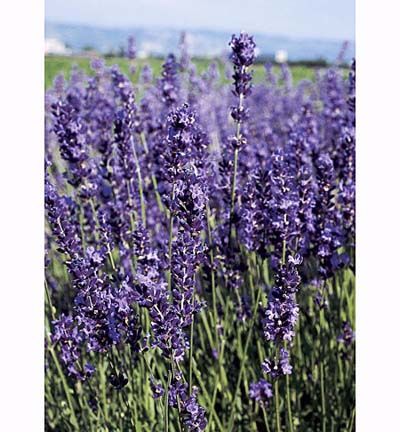
Lavender is a mounding evergreen shrub with silvery-gray needle-like leaves and spikes of fragrant purple or white flowers. Growing 2–3 feet tall, lavender thrives in full sun and well-drained soil. It’s hardy in Zones 5 to 8, offering both beauty and aroma to drought-resistant gardens. Lavender’s versatility extends to uses in aromatherapy, crafting, and culinary applications, further enhancing its value in a home landscape.
Common Sage (Salvia Officinalis Spp.)
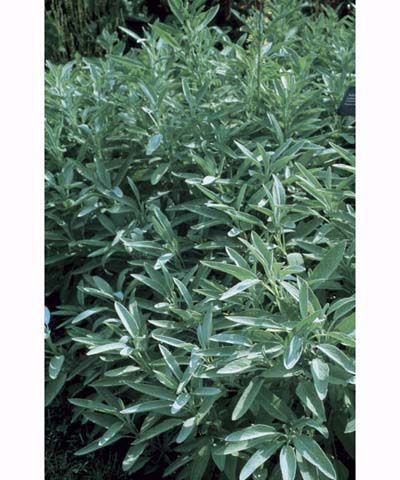
Common sage is a shrubby plant with wooly, gray-green evergreen leaves. Growing 2–3 feet high, this drought-resistant herb prefers full sun and very well-drained soil. It thrives in in USDA Hardiness Zones 5 to 9, making it a versatile choice for many regions. Its vibrant appearance and culinary versatility make common sage an excellent addition to any drought-resistant garden.
Succulents and Ground Covers for Dry Landscapes
Succulents and ground covers are excellent additions to drought-resistant gardens, offering unique textures and low-maintenance beauty.
Succulent Varieties
Succulents are masters of water conservation, storing moisture in their fleshy leaves and stems.
Sedum ‘Autumn Joy’ (Sedum Hybrid ‘Autumn Joy’)
Sedum ‘Autumn Joy’ is a deciduous succulent featuring deep-pink to bronze flowers. Growing 2 feet tall, this drought-resistant perennial prefers full sun and well-drained soil. It grows well in USDA Hardiness Zones 4 to 9, offering late-season interest to dry gardens. Its vibrant flowers and structural form make ‘Autumn Joy’ a standout in any drought-tolerant planting scheme.
Hens and Chicks (Sempervivum Tectorum)
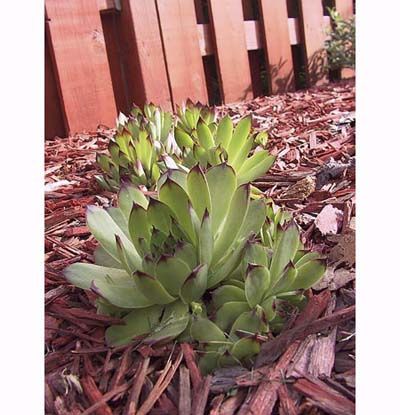
Hens and chicks form rosettes of succulent leaves in shades of green, blue-green, and red or purple. These low-growing plants reach 2–4 inches in height and prefer full sun or light shade. Hardy in Zones 4 to 10, they’re excellent for rock gardens and dry landscapes.
Low-Growing Ground Covers
Drought-resistant ground covers help suppress weeds and add visual interest to bare areas.
Snow-In-Summer (Cerastium Tomentosum)
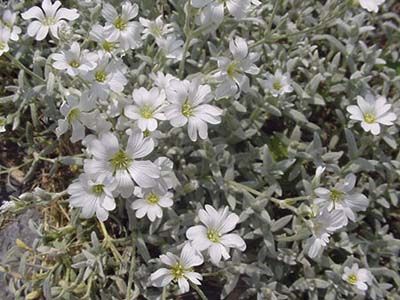
Snow-in-summer features silvery, wooly foliage topped by white, star-shaped flowers. Growing 2–3 inches tall, this ground cover prefers well-drained soil and sunny locations. It grows well in USDA Hardiness Zones 4 to 7, creating a carpet-like effect in drought-resistant gardens. Its dense growth habit is excellent for erosion control and weed suppression, further reducing the maintenance needs of your garden.
Creeping Phlox (Phlox Subulata)
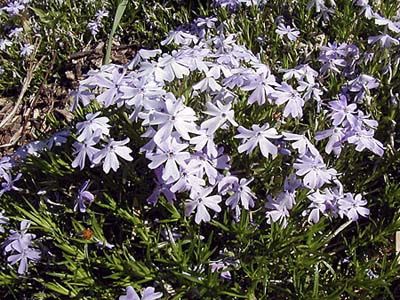
Creeping phlox offers hairy, bright-green evergreen foliage and violet, pink, or white flowers in late spring to early summer. Growing 2–6 inches tall, it prefers full sun and fertile, well-drained soil. You’ll have the most success in USDA Hardiness Zones 3 to 10, where it’s an excellent choice for rock gardens and slopes. The vibrant blooms of creeping phlox provide an early splash of color, making it a favorite for springtime gardening and adding long-lasting appeal to your landscape.
Sedum (Sedum Spurium)
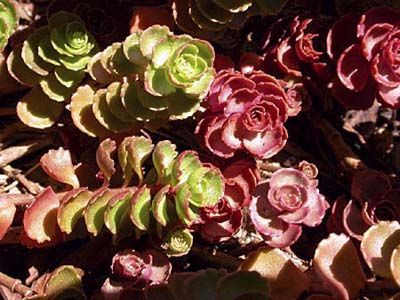
Sedum has fleshy evergreen leaves and boasts loose clusters of purplish or white flowers in summer. It grows 4 inches tall and prefers full sun and average to rich soil. This robust plant grows best in USDA Hardiness Zones 4 to 9.
Design Tips for Drought-Resistant Gardens
Creating an attractive, drought-resistant garden requires thoughtful planning and design. By focusing on strategic plant placement and aesthetic harmony, you can craft a garden that is both beautiful and water-efficient.
Creating Xeriscapes
Xeriscaping is the practice of designing landscapes that require little or no irrigation. To create a xeriscape:
- Group plants with similar water needs together
- Use mulch to retain soil moisture and reduce evaporation
- Incorporate hardscaping elements like rocks and gravel
- Install efficient irrigation systems, such as drip irrigation
- Choose native plants adapted to your local climate
Combining Textures and Colors
Improve the visual appeal of your drought-resistant garden by:
- Mixing plants with different leaf shapes and sizes
- Incorporating plants with varying bloom times for year-round interest
- Using contrasting foliage colors, such as silver and deep green
- Adding ornamental grasses for movement and texture
- Including structural elements like succulents or ornamental trees
Caring for Your Drought-Resistant Perennials
While drought-resistant perennials require less maintenance than traditional garden plants, they still benefit from proper care. Consistent attention to their specific needs to keep them healthy and attractive.
Watering Techniques
Efficient watering is crucial for drought-resistant gardens:
- Water deeply but infrequently to encourage deep root growth
- Use soaker hoses or drip irrigation for targeted watering
- Water early in the morning or late in the evening to reduce evaporation
- Avoid overhead watering, which can promote fungal diseases
- Adjust watering schedules based on rainfall and seasonal changes
Soil Preparation and Maintenance
Healthy soil is essential for drought-resistant perennials. Improve soil drainage by adding organic matter and using mulch to retain moisture and suppress weeds. Avoid over-fertilizing, which can lead to excessive growth and water needs.
Once to twice a year, test your soil pH and amend as necessary. Also use proper pruning techniques to maintain plant shape and vigor.
Climate Considerations for Drought-Resistant Gardening
Understanding your local climate is important for successful drought-resistant gardening.
Know Your USDA Hardiness Zone
USDA Hardiness Zones help gardeners determine which plants will thrive in your area based on average annual minimum winter temperatures. When selecting drought-resistant perennials, choose plants that are suitable for your hardiness zone so they can withstand both winter cold and summer heat.
Adapting to Your Local Climate
Consider these factors when adapting drought-resistant gardening techniques to your local climate:
- Annual rainfall patterns and distribution
- Length of the growing season
- Prevailing winds and their effect on evaporation
- Microclimates within your garden (e.g., sunny slopes, shaded areas)
- Local soil types and their water-retention capabilities
Our Conclusion
Drought-resistant perennials offer a sustainable and beautiful solution for gardeners facing water scarcity or seeking to create low-maintenance landscapes. By selecting plants adapted to your local climate and using water-wise gardening practices, you can enjoy a vibrant, eco-friendly garden that thrives with minimal irrigation.
